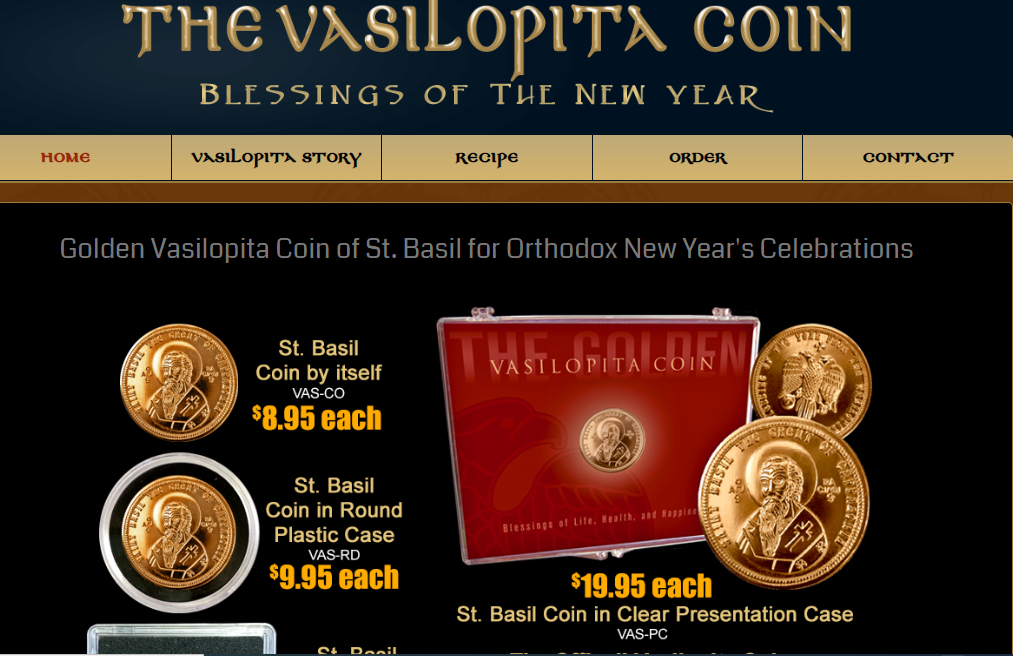To honor the life of Saint Basil, Vasilopita, a classic Greek cake, is served at midnight on New Year’s Eve. A coin is placed through the cake’s base after baking, and when it’s cut, whoever discovers the coin is said to receive luck for the remainder of the year.
The History of the Vasilopita Coin
To put it simply, Vasilopita has a coin baked inside of it to serve as a reminder of Saint Basil’s life. The coin was given as a gift and reminded me of how Saint Basil gave away everything he owned to aid the underprivileged. Everything that Saint Basil stands for is represented on the coin.
The Vasilopita, an annual gathering of family and friends, is one of Greece’s most lovely and inspiring traditions. “Sweet Bread of Basil” is the translation of the Greek phrase Vasilopita. A penny is incorporated into the Vasilopita’s components during preparation.
A coin can be hidden in bread by mixing a penny into the dough before baking. A knife is used to carve the shape of the cross over the cake at midnight. Each family member and any guests present at the time receive a slice of cake cut in half by age, from oldest to youngest.
Depending on regional and family customs, slices are carved for various symbolic individuals or entities. The Lord, St. Basil, other saints, the needy, the family, or the Kallikantzaroi may be among them. Earlier, the currency was frequently precious, like a gold sovereign. Nowadays, the coin recipient is frequently expected to get a gift, cash, or something else.
What is Vasilopita, exactly?
Vasilopita, also known as B. Vasilópita, is a traditional New Year’s Day bread or cake from Greece and many other parts of eastern Europe and the Balkans that, like the Western European King Cake, has a concealed coin or other lucky objects inside.
In most of Greece, it is related to Saint Basil’s Day, January 1, although in some areas, the customs involving a cake with a hidden coin are connected to Epiphany or Christmas. Depending on the regional and family tradition, it can be baked with several doughs, including tsoureki. In certain households, a custard base known as galatopita is used in place of dough.
Father George Papadeas, the first Greek Orthodox priest born in America, created and minted the St. Basil coin to symbolize good faith for all people. He did this primarily to uphold the Vasilopita Tradition, especially for children and people in mixed marriages who might not be familiar with the legend of St. Basil the Great, the forerunner of today’s hospital system and patron saint of generosity.
The lucky coin will be found by whom? With the traditional cutting of the Vasilopita cake, children and adults alike wait with expectation to locate the coin. Whoever is lucky enough to find the coin is said to experience good luck for the upcoming year.
One of the Greek Orthodox Church’s most pleasurable traditions is this family gathering, observed by all Eastern Orthodox believers worldwide. The tradition of cutting the Vasilopita together as a family on New Year’s Day has persisted since its inception 1,600 years ago. It is still very much present in Eastern Orthodox homes across the world.
How is Vasilopita made?
Sweet flavouring is added to the ingredients when the Vasilopita is made to represent the sweetness and delight of eternal life. Vasilopita symbolizes the wish that everyone participating in the ceremony will have a happy, healthy, and sweet life in the upcoming year.
When the elder family member slices the bread, a coin is baked into the dough or inserted inside. The person who receives the slice that has the coin is thought to be blessed with good luck for the approaching New Year.
How is the Vasilopita classified?
The Vasilopita bread (or cake) is divided into portions, each given out in turn. The first portion is cut in honor of our Lord and Savior, Jesus Christ. The second is given to the Virgin Mary. The third is given to St. Basil the Great. The remaining portions are given to family members, starting with the oldest and working down to the youngest.
FAQ
1. What is Vasilopita hiding?
Vasilopita, a Greek custom, draws the family together on New Year’s Day. Before baking, a coin is inserted inside the cake.
2. Disassembling the Vasilopita
Usually, the head of the household does the cutting, which involves making the sign of the cross three times on the cake. This is supposed to bring the house luck and favors.
3. How is the currency in the Vasilopita used?
Vasilopita, a traditional Greek cake, is served at midnight on New Year’s Eve in memory of Saint Basil. Before baking, a coin is inserted through the cake’s foundation; when it is cut, whoever finds the coin is said to find good fortune for the remainder of the year.
